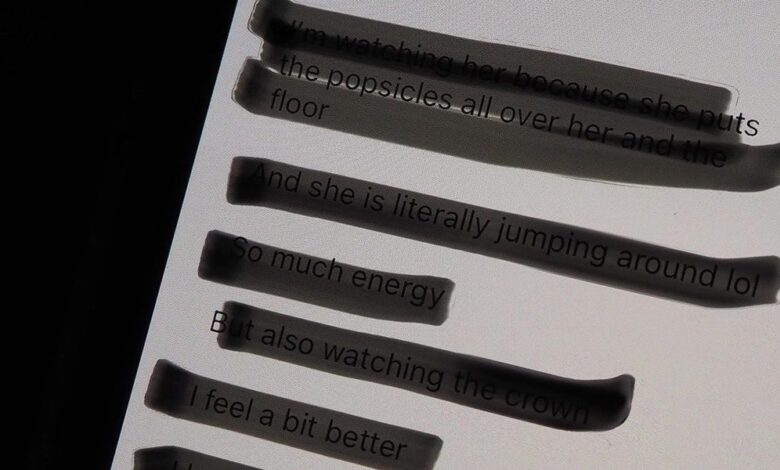Unveiling Hidden Secrets: Decoding the Enigmatic World of Blacked-Out Text

In the vast realm of information and data, blacked-out text often acts as a veil, shielding sensitive or confidential details. While this practice aims to safeguard privacy and adhere to evolving legal or regulatory requirements, it can also pose a challenge for those seeking to uncover the hidden message. Whether driven by curiosity, research purposes, or legal investigations, the ability to decipher blacked-out text can be of immense value.
Read the article to get to know how to uncover blacked-out text.
Harnessing the Power of Technology: Digital Unblackening
The emergence of sophisticated software solutions has revolutionized the field of unmasking blacked-out text. These programs, equipped with powerful algorithms and incorporating the latest advancements in artificial intelligence, meticulously analyze the surrounding text, identifying patterns and context clues that can be used to reconstruct the hidden characters.
Some of the most widely used unblackening software programs include:
-
PDF Eraser Pro: This versatile program focuses on unblackening text in PDF documents, employing advanced algorithms to analyze and remove blackening, making the underlying text more visible.
-
Blackout Recovery: This specialized tool utilizes artificial intelligence to recover blacked-out text from various document formats, including PDFs, Word documents, and images. It offers a user-friendly interface and a range of recovery options.
-
GIMP: This open-source image editing software provides a comprehensive set of image processing tools that can be effectively utilized for unblackening text. Its features include contrast enhancement, sharpening, and noise reduction, all of which can aid in revealing the obscured message.
Enhancing Visibility through Visual Manipulation: Image Processing Techniques
While software programs provide a convenient and automated approach to unblackening text, image processing techniques offer a more hands-on and versatile method. By converting the document into an image and applying various image processing tools, one can often enhance the visual cues and reveal the hidden text.
-
Contrast Manipulation: Adjusting the contrast of the image can make the blacked-out text more visible by increasing the difference between light and dark areas. This can be particularly effective in cases where the blackening is not very opaque or when the underlying text is faintly visible.
-
Edge Sharpening: Sharpening the image can make the edges of the blacked-out text more distinct, providing valuable clues to the underlying characters. This technique is particularly useful when the blackening has blurred the edges of the letters.
-
Noise Elimination: Reducing image noise can eliminate distracting patterns and make the hidden text easier to discern. This is particularly important when the document contains background noise or artifacts that obscure the blacked-out text.
-
Boundary Identification: Edge detection algorithms can identify the boundaries of objects in an image, including the edges of the blacked-out text. This can provide a framework for reconstructing the hidden characters.
-
Filter Application: Utilizing filters, such as median filters or Gaussian filters, can smoothen the image and eliminate noise, making the blacked-out text more visible.
-
Pattern Recognition: Advanced image processing techniques, such as pattern recognition algorithms, can analyze the texture and patterns of the blackening to identify the underlying characters. This approach is particularly effective when dealing with consistent patterns of blackening.
A Scrutinizing Eye for Subtle Hints: Manual Methods
In some instances, the nature of the blackening or the quality of the document may render digital or image processing techniques ineffective. In such cases, manual methods can provide an alternative approach. By carefully examining the document under optimal lighting conditions and using magnifying glasses if necessary, one may be able to detect subtle clues that reveal the hidden text.
-
Gap Identification: Look for gaps or inconsistencies in the blackening that may hint at the underlying characters. These gaps can provide valuable clues about the shape and spacing of the letters.
-
Stroke Analysis: Observe the direction and thickness of the blackening strokes, as these can provide clues to the shape of the letters. For instance, a vertical stroke is more likely to be part of an ‘I’ or an ‘L’ than an ‘O’ or a ‘C’.
-
Context Consideration: Take into account the surrounding text and the overall content of the document to make educated guesses about the hidden words. This is particularly helpful when dealing with partial blackouts.



